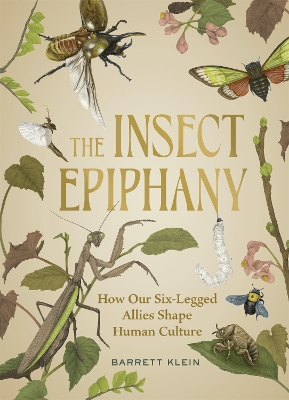Originally posted on my blog Nonstop Reader.
The Insect Epiphany is a well written, accurate, and fascinating look at insects and how they have interacted with and shaped human existence written by entomologist Dr. Barrett Klein. Released 15th Oct 2024 by Hachette on their Timber Press imprint, it's 368 pages and is available in hardcover, audio, and ebook formats.
This is a very well grounded, layman accessible monograph on insects and how they interact with and shape us from prehistory, down to the modern day. Dr. Klein manages to interpret and present often quite complex concepts in digestible & accessible bites which the average reader will have no trouble understanding.
The material, although wide-ranging in scope, is presented in a logical order: symbiosis (products and materials - silk, honey, wax, lacquer, etc), genesis (copying design/utilizing/engineering), and metamorphosis (copying fighting, mating, dancing, dress, etc).
The book is beautifully illustrated throughout, with paintings, illustrations, photographs, and facsimiles from historical archives, literature, and the arts. The author/publisher have also included useful appendices for readers' use including comprehensive chapter citations which are likely worth the price of the book by themselves.
It's not written in rigidly academic prose, but it is fully annotated throughout. Many (but not all) of the sources he uses in the book -are- academically demanding and will require some extra effort on the part of readers.
Five stars. This would be an excellent choice for public library acquisition, home use, and gift giving, for fans of popular science and nonfiction.
Disclosure: I received an ARC at no cost from the author/publisher for review purposes.
Reviewed by annieb123 on
Reading updates
- Started reading
- Finished reading
- 29 October, 2024: Reviewed
